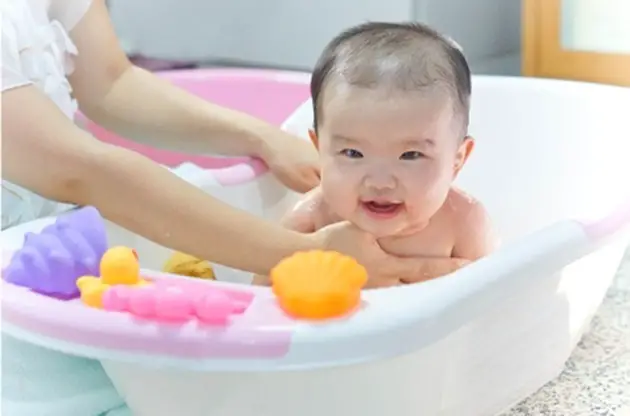When it comes to sleep, most of us have a bedtime routine, which for a lot of us is a time to relax and unwind. My nightly routine includes washing my face, brushing and flossing my teeth, reading until I feel drowsy, and finally drifting off in to a (usually) restful slumber—sometimes with my reading light still on.
For many parents, though—especially first-time parents—bedtime can be very challenging and very stressful.
I used to babysit for a family who had trouble getting their 2-year-old to stay in bed at bedtime—he would often ask for a drink, a snack, or more cuddles. His parents would regale me with stories of how long it took for the boy to fall asleep, bargaining with him to stay in bed. I was surprised to hear this because I’d never had an issue getting the boy to go to and stay in bed. Looking back on it, I credit that to the routine I established with him: going potty, taking a bath, putting on pajamas, brushing teeth, getting into bed, and listening to two bedtime stories.
A consistent bedtime routine “separates day time from night time and wake time from sleep time and helps babies learn when its time to sleep and when it's time to be awake,” says Lisa J. Meltzer, Ph.D., Sleep Education Fellow for the National Sleep Foundation. “Our brains have dimmer switches. It takes them a while to calm and relax and go to sleep, and this is very true for babies as well.”
As a top baby skin care brand, Johnson’s created a three-step bedtime routine by partnering with hundreds of moms during a clinical study, and collaborating with more than 30 experts, including pediatricians and sleep specialists. The resulting bedtime routine “has been proved to help a child fall asleep faster and stay asleep longer,” says Kelly Fanning, senior brand manager at Johnson & Johnson Consumer Companies Inc.
Get the Best Kid-Friendly Activities
Sent to You Weekly!
Johnson’s 3-Step Bedtime Routine
Step 1: Bath time. A bedtime bath engages the senses, and “contributes to soothing children,” says David Mays, Pharm.D., director of global scientific engagement in Scientific Affairs for Johnson & Johnson Consumer Companies Inc.
Step 2: Infant massage. Dr. Mays says infant massage engages babies’ senses and can increase connections and emotional bonds to Mom and Dad.
Step 3: Quiet time. While quiet time takes many shapes around the world, Dr. Mays says it often involves reading or singing, the lights are dimmed, and the child is close to the parent.
In addition to falling asleep faster and sleeping longer, a consistent bedtime routine has added benefits for babies’ emotional and social development. Dr. Meltzer says babies who have a bedtime routine are less anxious, less depressed, and wake up happier in the morning.
RELATED:
The Importance of Sleep
Find Child Development Resources Near You











